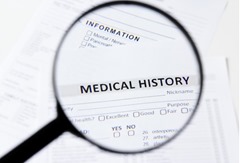
In 2015, we witnessed numerous health insurers and hospital systems fall victim to data breaches. While Anthem and Premera were just some of the bigger names making regular headlines last year, attacks were seen to reach even physicians’ offices. Just recently Centene Corporation and IU Health Arnett lost hard drives that compromised almost 1,000,000 people.
Every direction we look, there is significant use of electronic medical records, electronic prescribing, and digital imaging by health care providers. Whether it is the physician’s office, hospitals, insurers, medical associations, laboratories, disease registries, or government agencies, everyone is gathering digital pieces of information on the health status, care details, and health care costs of Americans. Along with personally identifiable information (PII) like names, mailing addresses, email aliases and dates of birth, healthcare entities also hold extremely personal and protected health data, such as lab results, reports, prescribed medications and medical conditions. In the event of a breach, unlike a credit card number, none of this information can be easily changed and the lifecycle of such information is very long – in some cases forever.
The Affordable Care Act has created significant incentives for doctors’ offices to embrace EHR systems as a replacement for paper-based medical records systems. So, now data has been integrated in an effort to do away with siloed approaches within provider groups, health plans, or government offices.
While the industry and governance bodies talk compliance, and claim protected health information is safe and secure, this is far from the truth as evidenced by the constant data breaches that are disclosed. With all the time, effort and money spent on traditional security tools used to achieve compliance, thieves bent on theft are still able to gain access to PHI for monetary gain.
The healthcare industry should consider the following steps to remain secure and stop healthcare data breaches:
- Realize and accept your risk – Take note that the protected health data you possess is a target of criminals. Simply complying with HIPAA does not equate to properly securing and locking away PHI data from unauthorized use.
- Identify where your PHI data is and who has access to it – Most often healthcare entities have false ideas on where sensitive data is stored and who has access to PHI. It often escapes people’s minds that their users copy sensitive data accessed from secure locations by localizing them or moving copies around. The result is security and control being lost and copies floating around on thumb drives, disks, email, laptops, home computers, and paper printouts.
- Properly secure your data – Most, if not all, entities dealing with healthcare data secure PHI at rest and in motion while they completely miss a significant threat gap – “data in use”.
- Label or classify data
- Encrypt your data
- Persistently protect data using policy-driven methods
- Track and monitor usage
- Dynamically adjust usage policies and access
- Plan for breach response
- Have means to render breached data useless
- Have an Incident Response Plan
You can stop healthcare data breaches by putting in place data-centric, persistent security to avoid finding yourself scrambling around after the damage has been done to you and your patients.
